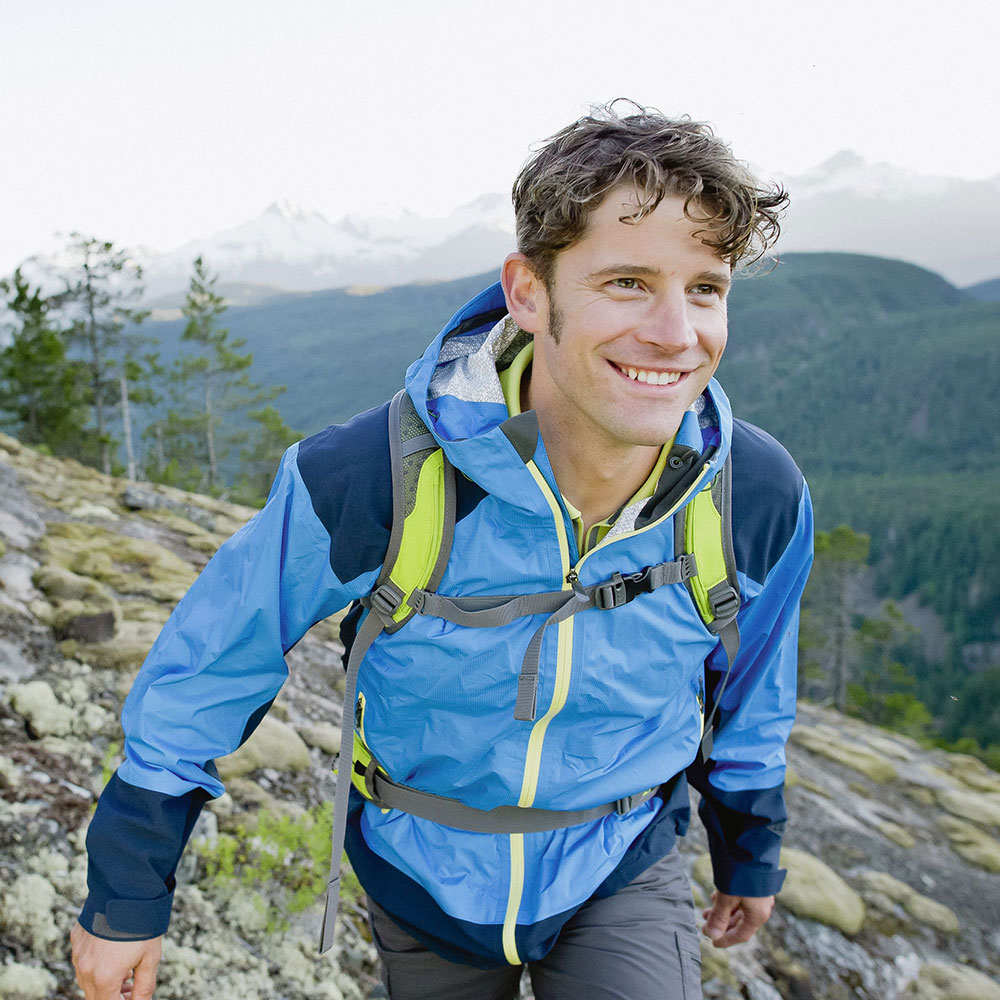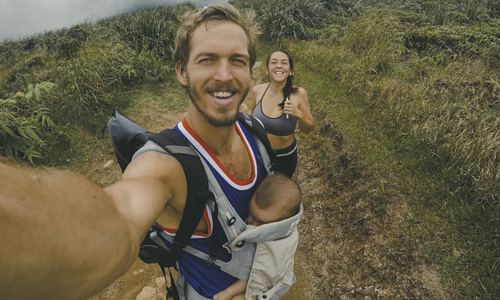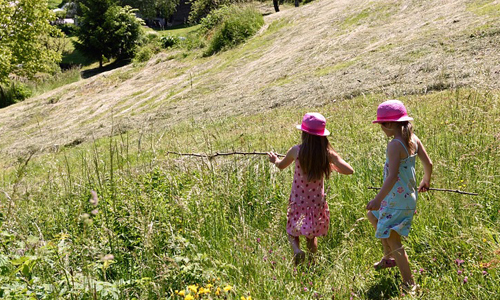Tips to take in to consideration when hiking with kids
Author

Mike has a real passion for cycling, hiking and just generally being outdoors. Being from Warrington, he is only a few hours away from North Wales, The Peak District, Yorkshire and the Lake District. He has climbed Mount Kilimanjaro and done a lot of the mountains in the Lake District. His new passion is walking his dog and enjoying a pint at the end.
A few months ago, I went hiking with my friends to a spot that I wouldn’t call kid-friendly. There were slippery logs, switchbacks, steep drop-offs and whatnot. It was easier for us adults to handle as it was an adult-paced hike and it forced me to think how families who go on such trips manage.
When you search “easy trails “on the web, they don’t consider a 20-pound baby and how it would affect the trail. Taking the age of your children into account is the first step to planning a good trip.

Carrying infants
As parents of infants, it is important to take into account that you have to carry them all the way to the end of the trail, even if you take turns. The mothers’ body might not be as strong as before so new parents need to be prepared physically as well as mentally before embarking on such an adventure. However, an upside to carrying infants is that they usually fall into a deep slumber as your body moves and sways, which rocks the baby to sleep.
Introducing crawler to the trail
Mud and dirt are the primary concern of parents with crawlers. As you plan a hike, try to look for one with a 5-to-7-mile stretch so that you can let your kids down from the carrier every half hour or 45 minutes so they can stretch their legs. Try to look for trails that have a little climbing slope and more flat spaces so your kids can crawl for some time, leaving your hands free and giving you the opportunity to change their diapers, have a snack, etc. As the babies are less than 6 months old, they are probably not that fast, so they won’t go too far.
Taking wobbly toddlers walking.
When your kid is between the age of 18 months and 3 years, it is hardest to pick the right trail for hiking. The kids are faster and you don’t want them to lose their adventurous spirit so look for flat and straight paths, slow sloping hills or trails with minimal drop-offs. You can also go to natural preserves and seize the opportunity to teach your kids about the plants and animals. Make sure you don’t choose a hike more than 2 or 3 miles long, as it would be difficult if the kids have a meltdown and it takes too long to reach back to the car.

Hiking with primary school kids
Children above the age of three have a better understanding about the risks, they understand that hiking can be dangerous and keep close. However, you should look for safe trails with a distance between 3-5 miles which have railings along cliff areas, bridges, switchbacks and not many slats with wide gaps. Make sure you choose a trail that is less crowded and pick the days that are not the busiest. The pre-K kids are a lot more curious and wander off easily so look for trails with an attraction that would make them stay focused on reaching the view, waterfall, lakes, etc.
Towards the end, some general things to keep in mind are: take along a muslin cloth or a light umbrella to protect the babies in case of a change in weather; carry binoculars, collapsible nets to catch tadpoles or butterflies and remember these are very short-lived stages in life and this way you are teaching your kid to start appreciating the outdoors, so enjoy these moments to the fullest.
Author

Mike has a real passion for cycling, hiking and just generally being outdoors. Being from Warrington, he is only a few hours away from North Wales, The Peak District, Yorkshire and the Lake District. He has climbed Mount Kilimanjaro and done a lot of the mountains in the Lake District. His new passion is walking his dog and enjoying a pint at the end.
Categories
- Sport (28)
- Product Reviews (3)
- Team Outdoor Look (7)
- Mike Wild (2)
- Mike Payton (2)
- Suse Hammond-Pears (3)
- Snowboarding (12)
- Latest Offers (105)
- Shop Talk (1)
- Competitions (7)
- Walking (413)
- Lifestyle Fashion (8)
- Travel (86)
- Kit Guides (176)
- Workwear Clothing (6)
- Safety Workwear (4)
- Health/Fitness (289)
- Skiing (91)
- Great Outdoors (1316)
- Cycling (92)
- January 2025
- December 2024
- November 2024
- October 2024
- September 2024
- August 2024
- July 2024
- June 2024
- May 2024
- April 2024
- March 2024
- February 2024
- January 2024
- December 2023
- November 2023
- October 2023
- September 2023
- August 2023
- July 2023
- June 2023
- May 2023
- April 2023
- March 2023
- February 2023
- January 2023
- December 2022
- November 2022
- October 2022
- September 2022
- August 2022
- July 2022
- June 2022
- May 2022
- April 2022
- March 2022
- February 2022
- January 2022
- December 2021
- November 2021
- October 2021
- September 2021
- August 2021
- July 2021
- June 2021
- May 2021
- April 2021
- March 2021
- February 2021
- January 2021
- December 2020
- November 2020
- October 2020
- September 2020
- August 2020
- July 2020
- June 2020
- May 2020
- April 2020
- March 2020
- February 2020
- January 2020
- December 2019
- November 2019
- October 2019
- September 2019
- August 2019
- July 2019
- June 2019
- May 2019
- April 2019
- March 2019
- February 2019
- January 2019
- December 2018
- November 2018
- October 2018
- September 2018
- August 2018
- July 2018
- June 2018
- May 2018
- April 2018
- March 2018
- February 2018
- January 2018
- December 2017
- November 2017
- October 2017
- September 2017
- August 2017
- July 2017
- June 2017
- May 2017
- April 2017
- March 2017
- February 2017
- January 2017
- December 2016
- November 2016
- October 2016
- September 2016
- August 2016
- July 2016
- June 2016
- May 2016
- April 2016
- March 2016
- February 2016
- January 2016
- December 2015
- November 2015
- October 2015
- September 2015
- August 2015
- July 2015
- June 2015
- May 2015
- April 2015
- March 2015
- February 2015
- January 2015
- December 2014
- November 2014
- October 2014
- September 2014
- August 2014
- July 2014
- June 2014
- May 2014
- April 2014
- March 2014
- February 2014
- January 2014
- December 2013
- November 2013
- October 2013
- September 2013
- August 2013
- July 2013
- June 2013
- May 2013
- April 2013
- March 2013
- February 2013
- January 2013
- December 2012
- November 2012
- October 2012
- September 2012
- August 2012
- July 2012
- June 2012
- May 2012
- April 2012
- March 2012
- February 2012
- January 2012
- December 2011
- November 2011
- October 2011
- September 2011
- August 2011
- May 2010
- April 2010
- March 2010
- February 2010
- January 2010
- November 2009
- October 2009
- September 2009


Submit a Comment